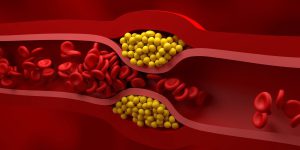In the quest for physical fitness and wellness, the landscape of supplements and performance enhancers is ever-evolving. One category that has garnered attention in recent years is Selective Androgen Receptor Modulators, or SARMS. While primarily known for their muscle-building properties. SARMS also hold promise in managing cholesterol levels, specifically control bad cholesterol, or LDL (Low-Density Lipoprotein). Let’s delve into how SARMS might be a potential ally in the battle against high LDL cholesterol.
Understanding Cholesterol
Before we explore the relationship between SARMS and cholesterol, it’s crucial to grasp the role of cholesterol in the body. Cholesterol is a waxy, fat-like substance found in every cell of the body and is essential for building cell membranes, producing hormones, and aiding in the digestion of fat. However, when cholesterol levels become imbalanced. It can lead to atherosclerosis, a condition characterized by the accumulation of plaque in the arteries. Increasing the risk of heart disease and stroke.
Cholesterol exists in different forms within the body. High-Density Lipoprotein (HDL) is often referred to as “good” cholesterol as it helps remove LDL from the arteries, transporting it to the liver for excretion. On the other hand, LDL, or “bad” cholesterol. It can build up in the arteries, leading to blockages and potentially dangerous health conditions.
SARMS: More Than Muscle Builders?
Selective Androgen Receptor Modulators were initially developed to treat conditions like muscle wasting and osteoporosis. They work by selectively binding to androgen receptors in the body, influencing gene expression that leads to muscle growth and bone density improvement. However, recent research suggests that SARMS might have additional benefits beyond their primary muscle-building function.
The Link Between SARMS and Cholesterol
While studies on SARMS are still in their infancy compared to other pharmaceuticals, there is emerging evidence to suggest that SARMS could impact cholesterol levels. One study published in the Journal of Pharmacology and Experimental Therapeutics found that a specific SARM known as S-23 and RAD-140 demonstrated a significant reduction in LDL cholesterol levels in rats. Similarly, another study published in the Journal of Steroid Biochemistry and Molecular Biology reported that another SARM, GTx-024 (also known as enobosarm or ostarine), decreased LDL cholesterol levels in monkeys.
These findings are promising, indicating that SARMS might not only enhance physical performance but also contribute to cardiovascular health by lowering LDL cholesterol levels. However, it’s essential to note that research on SARMS and cholesterol in humans is limited. And more comprehensive studies are needed to fully understand their effects and potential benefits.
In Conclusion
While SARMS hold promise as a potential tool in managing cholesterol levels. Particularly LDL cholesterol, more research is needed to validate their efficacy and safety in humans. As of now, lifestyle modifications such as regular exercise, a balanced diet, and medication prescribed by healthcare professionals remain the cornerstone of cholesterol management.
As the scientific community continues to explore the multifaceted effects of SARMS. It’s essential to approach their use with caution and prioritize evidence-based practices in pursuit of optimal health and wellness.

